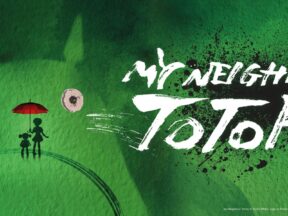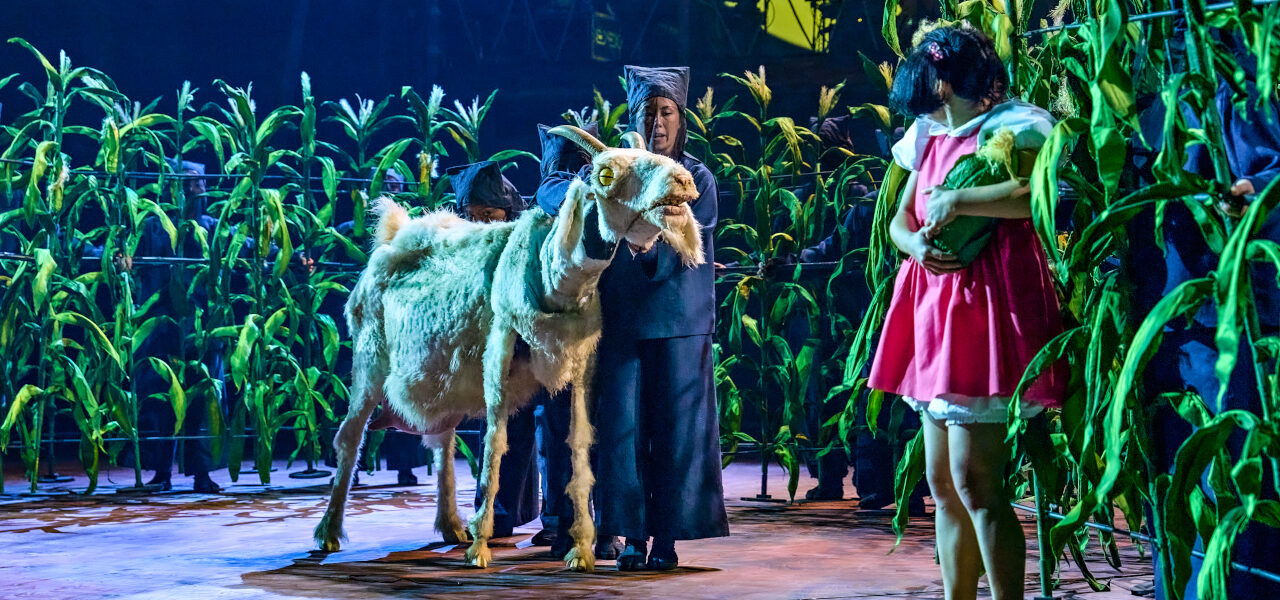
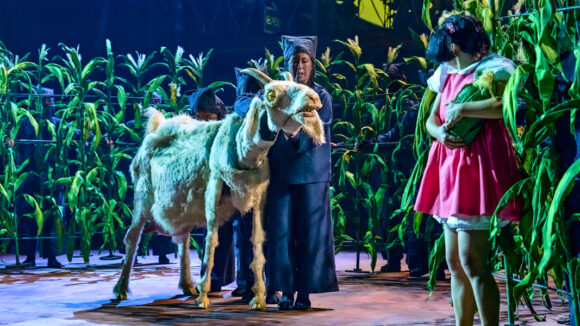
‘My Neighbor Totoro’ Puppeteer Basil Twist On Bringing The Magic Of Miyazaki To The Royal Shakespeare Company Stage
Bringing animation into live action is a challenging notion to contend with, and for a live performance even more so.
But the Royal Shakespeare Company’s adaptation of Studio Ghibli’s My Neighbor Totoro – executive produced by the film’s composer Joe Hisaishi, directed by Phelim McDermott, and written by Tom Morton-Smith – does a wondrous job of doing just that while capturing the whimsy and natural beauty of the setting and eponymous forest spirit of Hayao Miyazaki’s famous 1988 film.
Though some parts of the original film are decompressed and expanded further, the story is the same: 10-year-old Satsuki and 4-year-old Mei move with their father to a village in the countryside to be closer to their hospitalized mother. It doesn’t take long for them to discover the surrounding trees are inhabited by magical spirits of the forest.

In the theater, the production design and puppetry are an essential part of that magic, the latter designed by puppeteer Basil Twist and built by the Jim Henson Creature Shop. We spoke to Twist about his role in the production and the considerations that went into bringing the large furry forest spirit to the stage.
Did you have a relationship with this particular film or any other Studio Ghibli films before working on this production? What led you to take part?

I only really knew the work of Ghibli through Spirited Away and Princess Mononoke. I knew of Totoro, but when I first found out about this project three years ago, I hadn’t seen it. So, I saw it right away and fell in love with it, and have since seen lots of other Ghibli films. But I had worked before with the creative team, director Phelim McDermott and production designer Tom Pye. We had been working on an English National Opera production of Aida and I had also worked with Phelim for many years before on other projects. That was the context into which I got sort of pulled into the project. When it became clear that they needed somebody like me for this project they asked, “Hey Basil, what do you know about Totoro?” “Oh yes, I think I’ve seen him before. Let me check out the film,” and here I am.
Was there much creative overlap with the projects that you were working on with Phelim and the others before, or was this totally different from how you had collaborated in the past?
There’s always this kind of exploratory workshop, a sort of time where we play, where we’re playing and playing and playing and experimenting and trying with getting all kinds of materials and playing and landing on what we’re going to do. Phelim has used puppetry a lot throughout his career. So that sense of play is inherent in the way that he works.
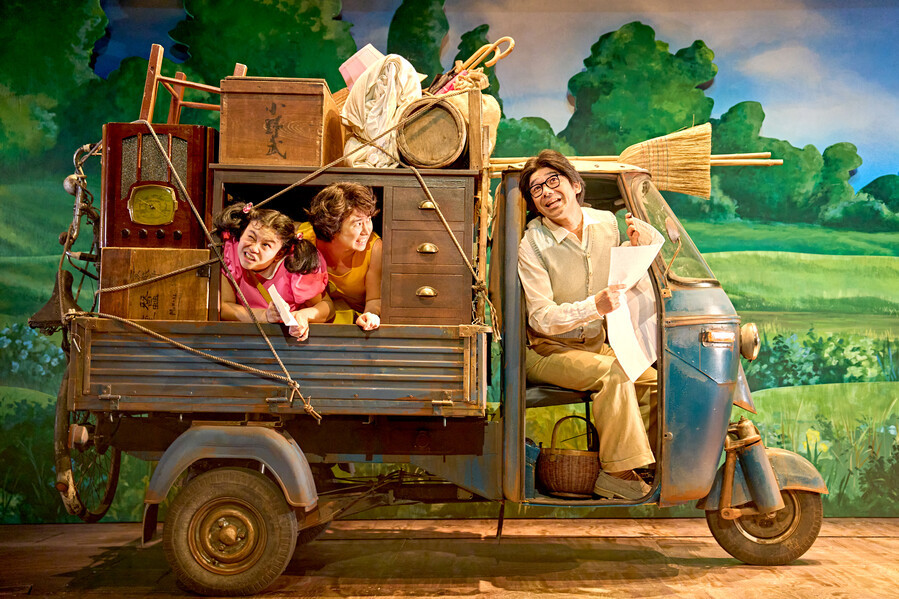
Could you tell me about any roads not taken with the puppets that you investigated at that stage of exploration?
I’d say with the Catbus there was a lot of experimentation where we tried different ways of realizing it. And we had a workshop that we did where we made a new Catbus every day for a week, different kinds. Is it like this, is it like this? Is there one where someone can get inside it? Anyway, we had this great run of trying to make different Catbuses every day until we sort of landed on the perfect one.
How did you find that balance between the look and the logistics?
You want things to be lightweight; things have to be lightweight to be able to function on stage. Especially if they’re supposed to be big, it gets scary if they get heavy. What’s interesting is when I had worked with Phelim and Tom before on Aida, I had a very specific role. I was a silk choreographer, so I worked to animate fabric to kind of bring the movement of fabric to life. It’s a sort of philosophy of working with any material, to let it come to life and to let things create the conditions for the material to sort of, live on its own; things have life inherently within them. That eventually informed the solutions that we found for a lot of the puppetry. There are a lot of elements that have their own life and you just need to bring them on stage and let them be. Anyway, I think it’s no surprise that there’s more than one Totoro in the show; they do different things that he needs to do. And the thing that really unifies them is the fur. It must be something that you want to touch, that you want to squeeze him or fall asleep on his belly.
Did you work closely with Ghibli at all in nailing down the visual details?
Not directly with Ghibli, but one of the partners was Nippon tv and they were the gateway, along with composer and producer Joe Hisaishi. They were very generous with their thoughts about, oh, Totoro’s eyes being too far apart or too close together, or where his ears sat on his head. That sort of thing was actually really useful, to have that eye to say, “Oh, this is going in the right direction,” or “Oh, be careful there you should make this a little more this way.” He actually is quite a sophisticated shape. He looks kind of just like an egg basically, but there are nuances around his face that were really specific to try and maintain and to get right.
Working with a character people recognize, how do you find room for expressivity of your own?
I mean, it is very different to do something three-dimensionally on stage as opposed to how something is realized in a cartoon. So, you’re going for impressions also. What is the impression Mae would have when she first encounters Totoro? What does she experience? I mean, a lot of the film is seen through the kids’ eyes. Our first experience of Totoro is through Mae’s eyes. And Mae is a four-year-old child. I mean she’s small, and how would she experience Totoro when she’s on his belly?
So, you take that and apply it to the solutions you find, which are not always the same as in the animated film. In the film, you don’t see Totoro when he arrives at the bus stop. You see his feet, but you don’t see his whole body. It’s part of what the camera shot can allow, but the stage doesn’t allow you the liberty to frame it that way. The puppet has to walk on stage, and how do you do that? You have to find that solution. And therein is something wonderful. Every time Totoro appears, how do you make him appear?
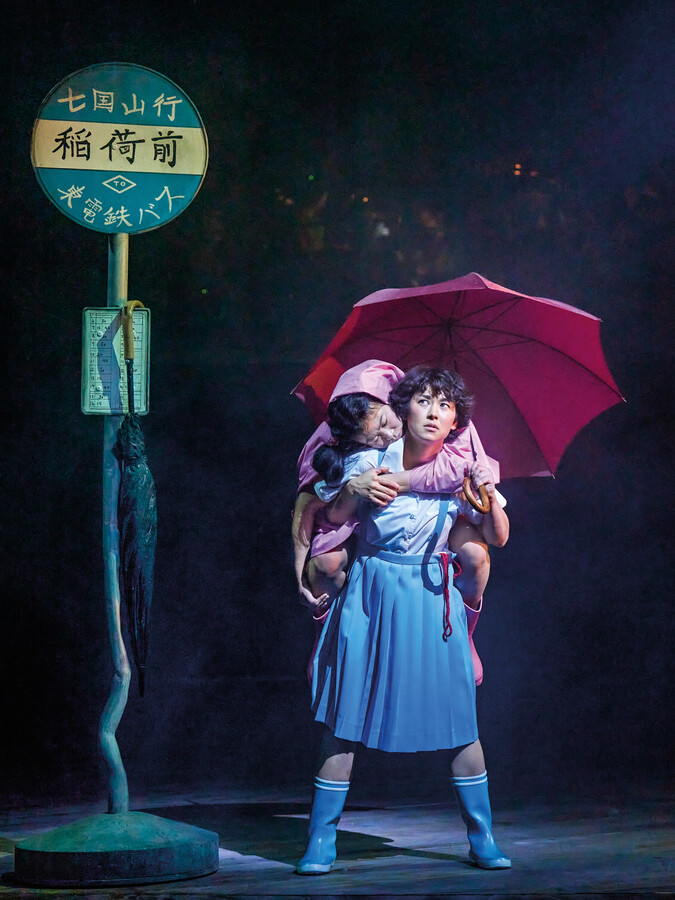
I did love the solutions to those instances of movement, and how the actual puppeteers sort of played the role of the chorus in the play itself. How did that affect the design choices you were making along the way?
A lot of contemporary puppetry has the puppeteers being visible. That’s a lot of what we’ve seen on stages from War Horse to Life of Pi. You can see the puppeteers at work. The work that I’ve been doing with Phelim has had that kind of built into it for years. That language is established early on in the show when we introduce this group of people who are the storytellers, and the spirits on stage are how they’re sort of incarnated. It gives you a lot of freedom to use them to create, to do the act of puppetry and illusion. You can hide them sometimes, and then it’s a delight, but you can always go back to having them be there, like little elves or shadows that are around helping bring things to life and ferry the story along.
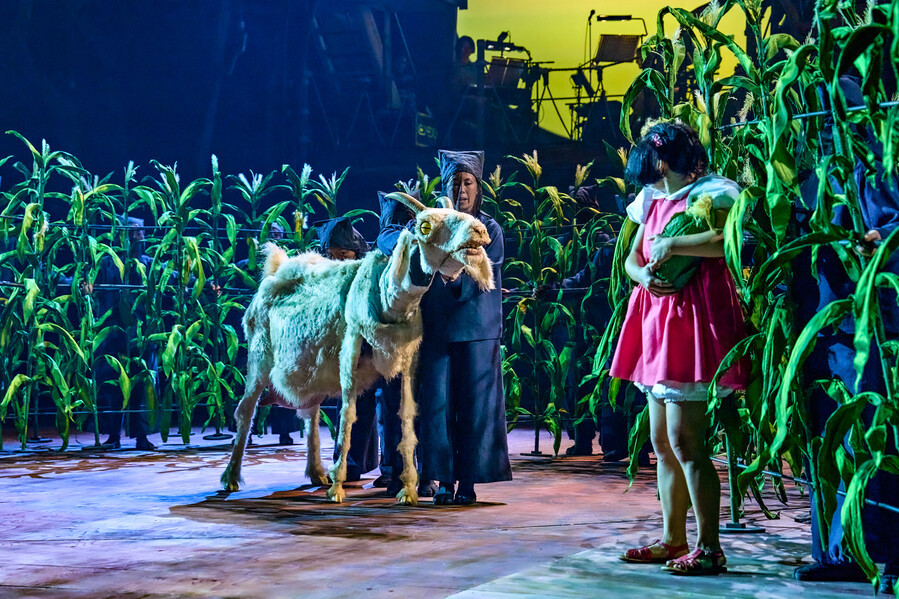
It’s a great technique for allowing us to puppeteer because we see the active puppeteering, but it also thematically works well with the story because they become sort of nature spirits within the forest and the house, and it allows us to see them. Doing the Soot Sprites would be really hard if you had to hide everybody all the time. But not only do we make it more feasible to stage, we also get the delight of seeing these characters and they become a sort of Greek chorus throughout the show.
Last thing: Did you have a favorite puppet on this show?
My favorite was the bus stop Totoro. We have different Totoros, but the one who’s at the iconic bus stop scene is my favorite. It’s the movement and it’s the expressivity that he has in his face. It’s funny, Totoro doesn’t do much in the film or in the show. He just isn’t there a lot, and that’s a scene where he shows up and stands there and then holds an umbrella and it’s very… I’m really pleased with how that puppet came out and how we kind of just get to appreciate him just being there.
*The Royal Shakespeare Company aren’t sharing photos of the Totoro puppet yet, so for now readers will have to use their imaginations, or get to London before January 21, when the show ends its run at the Barbican Theatre.
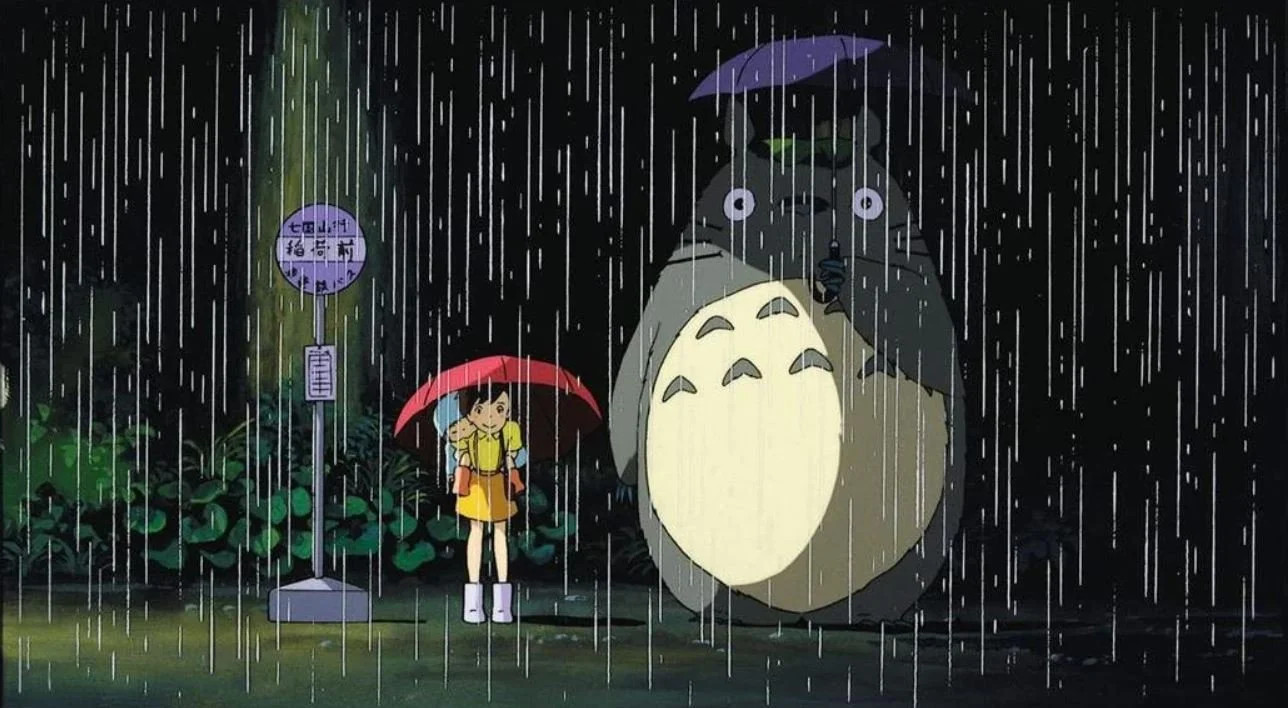

.png)
